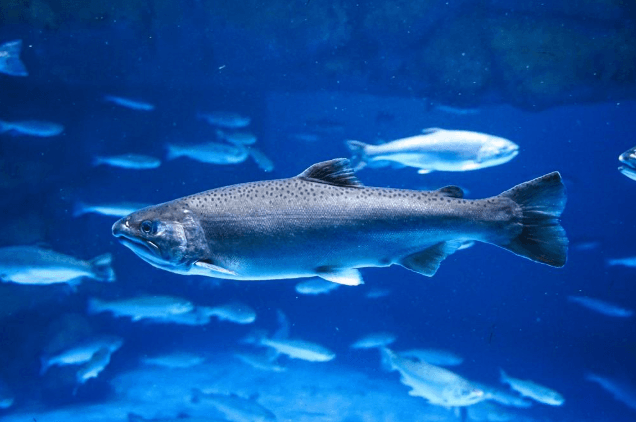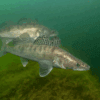No products in the cart.
Return To ShopCollaborative Projects and Their Impact on Fisheries Science
Introduction
Collaboration in fisheries science is not only beneficial but often essential for tackling the complex issues facing aquatic ecosystems today. This blog post explores the value of collaborative projects in fisheries biology, how they bring together diverse expertise, and the positive outcomes they generate for both science and conservation efforts.
The Power of Collaboration
Interdisciplinary Approach:
- Many challenges in fisheries management require expertise from multiple disciplines such as biology, ecology, chemistry, geography, and even social sciences. Collaborative projects allow for a holistic approach to research and problem-solving.
- Bringing together diverse perspectives can lead to more innovative solutions that are effective and sustainable.
Pooling Resources:
- Collaborative projects often have access to better funding opportunities and resources. Partnerships with universities, government agencies, and private sectors can provide the necessary financial support and advanced technologies.
- Shared resources mean that projects can achieve more extensive and detailed research outcomes than would be possible individually.
Enhancing Research Scope and Scale:
- Collaborations can extend the geographical and temporal scope of research studies. Projects that involve multiple locations or long-term data collection are more feasible when multiple organizations are involved.
- This extended scope can lead to better understanding of migratory patterns, population dynamics, and long-term ecological changes.
Capacity Building:
- Collaborative projects contribute to capacity building by training staff from different organizations, sharing knowledge and skills, and developing new methodologies.
- These activities help build a stronger community of fisheries scientists who are well-equipped to handle future challenges.
Policy Influence and Implementation:
- Joint efforts can exert a stronger influence on policy-making processes. Collaborative projects that provide conclusive, wide-ranging data are more likely to impact regulatory decisions and fisheries management practices.
- Successful collaborations often serve as models for policy development, demonstrating effective strategies for managing fish populations and habitats.
Case Example: The Columbia Basin PIT Tag Information System (PTAGIS)
Overview
The Columbia Basin PIT Tag Information System (PTAGIS) is a collaborative effort designed to monitor fish migrations, survival rates, and behavior in the Columbia River Basin, which spans parts of the United States and Canada. This system uses Passive Integrated Transponder (PIT) tags to collect critical data on salmon and other migratory fish species.
Collaborative Partners
PTAGIS involves numerous stakeholders including federal, state, and tribal fisheries agencies, hydroelectric companies, and environmental organizations. Key partners include the Bonneville Power Administration, the U.S. Army Corps of Engineers, and several Native American tribes whose historical fishing rights and knowledge are integral to the project.
Objectives: The primary goals of PTAGIS are to:
- Track the movements and survival of migratory fish species as they pass through dams and other river structures.
- Gather data to inform decisions on dam operations, fish hatchery practices, and habitat restoration efforts aimed at preserving or enhancing fish populations.
- Support scientific research and conservation strategies across multiple jurisdictions and stakeholders.
Technological Approach: Researchers implant small PIT tags into fish, which are then detected by a network of readers installed at various points along the river system, particularly at dams and fish hatcheries. These readers automatically record the unique codes from the tags, allowing scientists to track the movement and survival of individual fish over time.
Key Achievements:
- Enhanced Data Accuracy: The use of PIT tags provides precise and reliable data on fish migration patterns and survival rates, which is critical for effective fishery management and conservation practices.
- Improved Management Strategies: Data from PTAGIS has led to improvements in dam operations to ensure safer fish passage, as well as enhancements in hatchery practices and targeted habitat restoration projects.
- Cross-Agency Collaboration: PTAGIS has fostered an unprecedented level of collaboration among diverse stakeholders, facilitating shared access to data and resources, and promoting unified efforts in fisheries management.
Impact on Fisheries Science: PTAGIS exemplifies how technology and collaboration can significantly impact fisheries research and management. The project not only enhances understanding of fish behavior and ecology but also supports sustainable management practices that benefit both the ecosystem and the various human communities dependent on these resources.
Case Example: The Snake River Sockeye Salmon Recovery Project
Overview
The Snake River Sockeye Salmon Recovery Project is a significant conservation effort aimed at restoring the populations of sockeye salmon, which are listed as endangered under the U.S. Endangered Species Act. The project employs PIT tags to monitor the movements and survival rates of individual fish as they navigate through the Columbia and Snake River systems.
Collaborative Partners
This project involves a broad coalition of partners, including the Idaho Department of Fish and Game, the National Oceanic and Atmospheric Administration (NOAA) Fisheries, the Bonneville Power Administration, and several tribal groups with vested interests in salmon recovery. This collaboration ensures a comprehensive approach to the recovery efforts, integrating scientific research with traditional knowledge and resource management practices.
Objectives
The main goals of the Snake River Sockeye Salmon Recovery Project are to:
- Track the migration routes and survival rates of sockeye salmon from their natal lakes to the Pacific Ocean and back.
- Evaluate the effectiveness of various conservation strategies, such as habitat restoration and the modification of dam operations to facilitate safer fish passages.
- Provide data-driven insights to guide policy decisions and management actions aimed at recovering sockeye salmon populations.
Technological Approach
Researchers implant PIT tags in juvenile sockeye salmon before they begin their migration to the ocean. As these fish travel through the river systems, they pass over PIT tag detection systems installed at various strategic locations, including dams and other critical passage points. These detections provide valuable data on migration timing, survival rates, and the impacts of environmental conditions and human-made structures on their journey.
Key Achievements:
- Improved Survival Rates: Insights gained from PIT tag data have led to targeted actions that have incrementally improved the survival rates of migrating sockeye salmon.
- Adaptive Management: The project has exemplified the use of adaptive management in conservation, where strategies are continually refined based on ongoing research and data analysis.
- Stakeholder Engagement: The project has successfully engaged a wide range of stakeholders, fostering a shared commitment to the recovery of sockeye salmon and the health of the river ecosystems.
Impact on Fisheries Science
The Snake River Sockeye Salmon Recovery Project demonstrates how PIT tags can be instrumental in endangered species recovery efforts. The detailed data collected through this technology provides a critical foundation for scientific research, conservation planning, and the adaptive management of fisheries resources.
Conclusion
Collaborative projects in fisheries science are essential for addressing the complex, interconnected challenges that face aquatic environments. By working together, researchers and conservationists can amplify their impact, driving significant advancements in both science and sustainable fisheries management.




Add comment